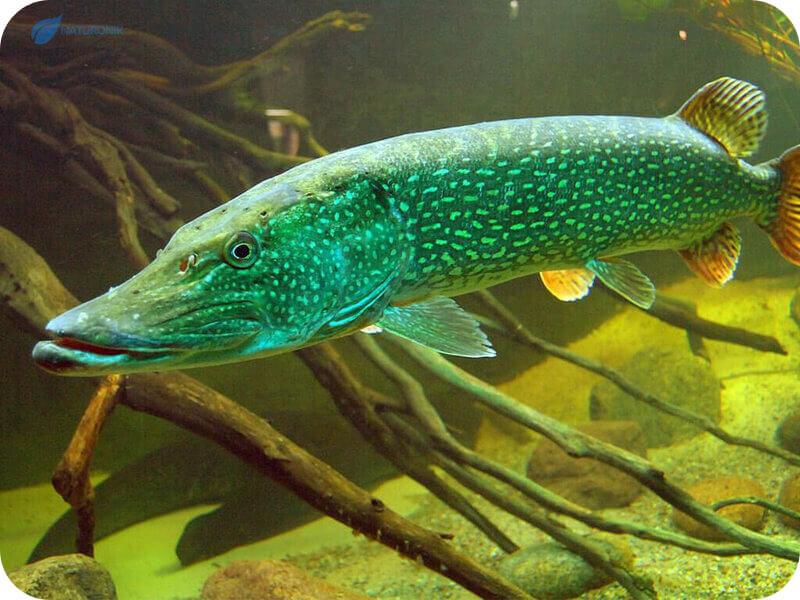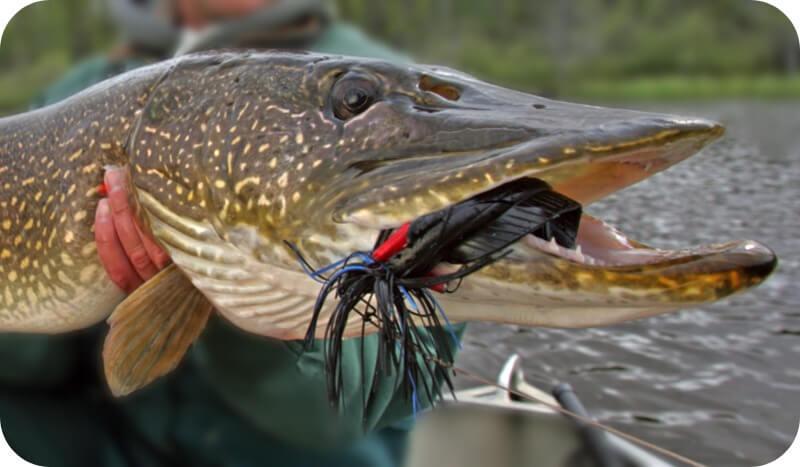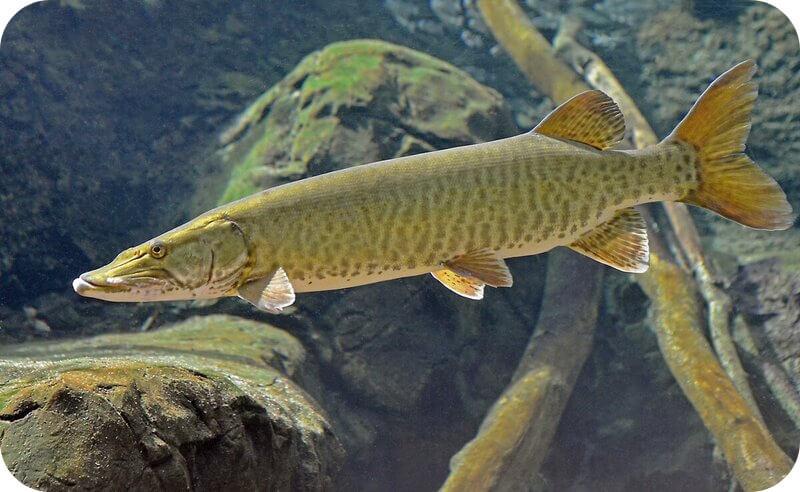Contents
Pike is the most famous and widespread predator, which is known on all continents of the northern hemisphere. Pike species are quite diverse, some representatives live only in certain areas, while others are found in North America and Eurasia.
What types of pike exist
In nature, there are several types of pike, most of them have a sufficient population, but there are varieties that are protected by the legislation of the countries in which they live. The most common and well-known is the common predator, while the rest are less common, and therefore not everyone knows about them.

All pikes are united by certain external characteristics, among which are:
- elongated snout;
- torpedo-shaped or cone-shaped body;
- spotting over the entire surface, the only exception will be albino;
- the location of the fins will also make it possible to recognize a pike in a caught fish;
- cannibalism, that is, eating their relatives is also characteristic of all types of this predator;
- a row of sharp teeth wrapped inward is found only in pike.
Competitions are often held to catch pike, but not all species are caught. Some grow not very large, so they are of no interest in this case. In North America, there is a species of pike whose caviar is toxic, and the meat is not very tasty and is of practically no value, which is why the population is very numerous.
Next, we will dwell in more detail on the main characteristics of all known types of pikes.
Pike varieties
Now officially there are seven types of pikes, but one more is constantly arguing. They live both in reservoirs with stagnant water, and along many large and small rivers of the entire Northern Hemisphere of the planet Earth. All species have both common characteristics and multiple differences, and we will continue to study them.
Ordinary

The most common type of toothy predator is the common pike. It is found in almost all freshwater reservoirs in Europe, North America, in the Aral Sea basin and in Siberian rivers and lakes. In length, an adult can reach one and a half meters, and the weight sometimes exceeds 10 kg, but on average it has no more than 8 kg.
There are two subspecies of a predator: grass and deep. The color of the body can be different, it depends on the habitat of the fish. This species may have a color:
- greenish gray;
- brown;
- grey-yellow.
In this case, the tummy will always remain light.
In nutrition, an ordinary she is not picky, she does not disdain anything on her territory. It can even defeat smaller fellow tribesmen without a twinge of conscience.
Fry stay in flocks for some time, adults prefer a solitary lifestyle. They prefer to stand in thickets and snags and look out for potential victims from there.
black pike

This species is also called the striped pike, it lives in the reservoirs of eastern North America. The characteristic features of the species are:
- relatively small size, in a dyne it reaches only 60 cm maximum, but the weight can be 4 kg;
- differs from the common pike by dark stripes above the eyes;
- the snout of the black pike is shorter than that of the rest of the family;
- its inherent and mosaic pattern on the sides, it resembles stripes or links.
The diet will also differ, the predator prefers to eat invertebrates and small crustaceans. For habitation, he chooses dams with a lot of vegetation.
Sexual maturity of the black pike is reached at different times, usually 1-4 years. For spawning, each female will need a pair of males. At a time, she lays from 6 to 8 thousand eggs.
Amur pike

The name speaks for itself, the habitat and gave the name to the species. Amur is found in the Amur basin, as well as in some reservoirs of Sakhalin.
Features of the Amur pike are:
- silvery or golden color of the scales;
- dark spots in the upper body;
- adult size up to 115 cm;
- maximum registered weight 20 kg.
Inexperienced anglers often confuse Amur pike with taimen, their body shape and color are very similar.
American pike

The species differs from congeners by a shortened snout and relatively small size of adults. Life expectancy is only 10 years, the average length is 35-45 cm with a weight of about 1-1,5 kg.
The species is also called the red-finned pike, it has two subspecies:
- northern redfin;
- southern herbal.
It lives in the eastern part of North America, it feels most comfortable in dams with a high level of algae, and chooses reservoirs with stagnant water.
Maskinong

The toothy predator received such an unusual name from the Indians, in their language this is how the “ugly pike” sounds. Its habitats are quite limited, it can only be found in North America and even then not often.
Unlike the American pike, the maskingong lives for about 30 years, while it can grow up to almost two meters. The maximum recorded weight of a fish was more than 40 kg, but it is allowed to take it when catching no more than 20 kg.
For the first ten years, she actively feeds and grows in length, then this process stops. Predatory inclinations in the diet shows in the first year of life. Maskinong has three subspecies, their characteristics differ from each other.
| subspecies of masquenonga | color characteristics |
| striped or plain | has dark stripes on the body |
| пятнистый | there are dark dots on the silvery scales |
| clean or naked | no stripes or spots on the body are visible |
All subspecies will be united by the presence of seven sensory points on the lower jaw.
It is this type of pike from the North American continent that is considered a giant; masquenong individuals are considered the largest among the pike representatives.
South
The Italian pike or the southern one gained “independence” not so long ago, it was separated from the common one only in 2011. Until that time, in all reference books and encyclopedias, it was considered one of the subspecies of the common.
The habitat helped the predator to get a second name; you can find it only in freshwater bodies of Italy. Otherwise, the southern one is completely similar to the common pike.
Aquitaine

The youngest representative of pike, it was described as a separate species only in 2014. A feature of this species is a very limited habitat, it can only be found in freshwater reservoirs of France.
At the moment, these are all officially registered species of toothy predator. Scientists are still arguing about another one, some believe that a hybrid of an ordinary pike and a maskinong should be singled out separately. Others emphasize that these individuals cannot reproduce on their own, and therefore they cannot be made a separate species.
Differences between pike and other fish
The classification of pikes told us about the differences between predators. And with other inhabitants of the reservoir, too, there is a difference. Pike is distinguished from other fish by:
- sharp teeth wrapped inside, which leaves no chance for prey to escape;
- the location of the dorsal fin, it is closer to the tail, and right below it it is easy to find the anal fin;
- the pectoral fins are located in the immediate vicinity of the head, the pelvic fins in the middle of the body;
- You can recognize a pike by small scales.
It is these characteristics that distinguish the toothy inhabitant of the reservoir from the rest of its inhabitants.
We managed to find out all types of pikes that are on our planet and are known to mankind. It is worth noting that it is this predator that anglers most often want to see as a trophy. We hope that the information received will help to recognize the caught trophy.










